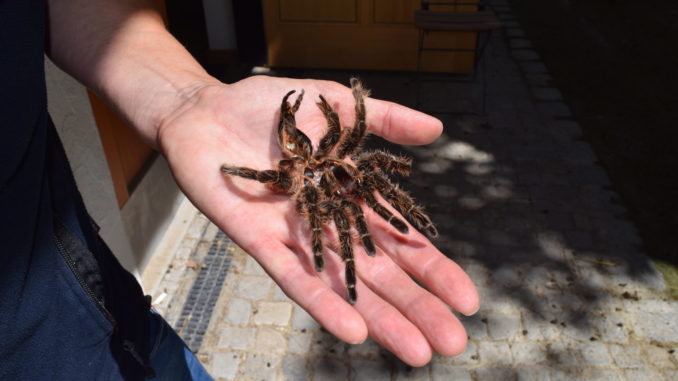
Coronavirus fright is now common enough to rate its own “Phobia Scale,” courtesy of Turkish scientists, but that doesn’t mean the old standby phobias have left us. With normalcy on pause and some lives compressed to the size of 500-square-foot apartment quarantines, pandemic panic is making other fears worse.
Heights, enclosed spaces, flying—if you were scared of it before, chances are it terrifies you now. Arachnophobia, too, isn’t going anywhere. With Covid-19 as a force multiplier, the fear of creepy-crawly spiders has never been more acute for many sufferers. A surging number are seeking out Anna for special help.
Anna is a therapist—and a curly-haired tarantula, officially on the books of Hellabrunn Zoo in Munich, Germany as Tliltocatl albopilosus. She’s not a man-eater. She wouldn’t hurt a fly, unless she were hungry. She lives in a terrarium and comes out to play on demand.
Zoo visitors who are terrified of spiders bypass the historical Elephant House, Giraffe Savanna and Polar World to be healed in Ursula Riedinger’s one-day seminar. Riedinger is a naturopathic psychotherapist who specializes in animal-assisted interventions.
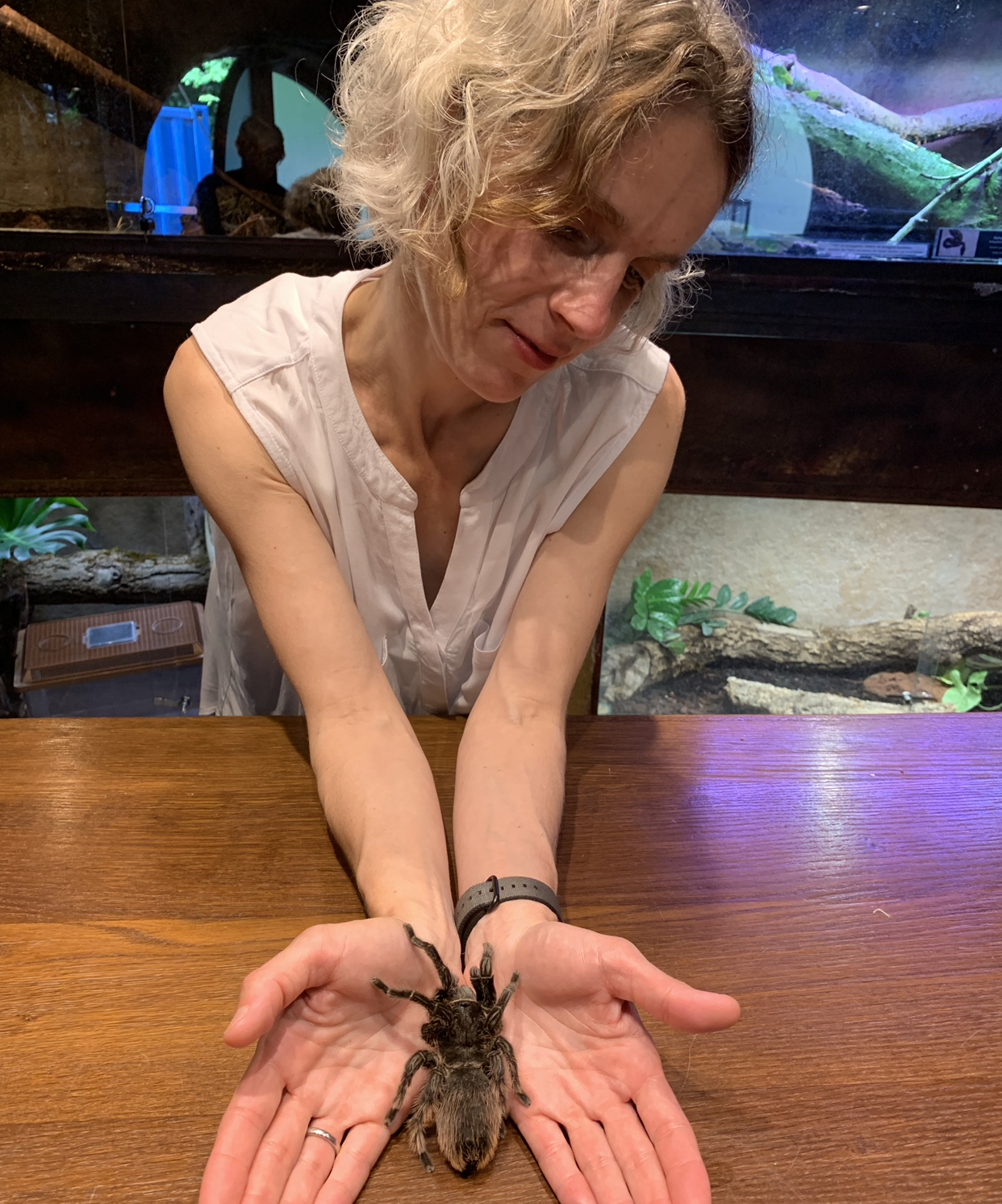
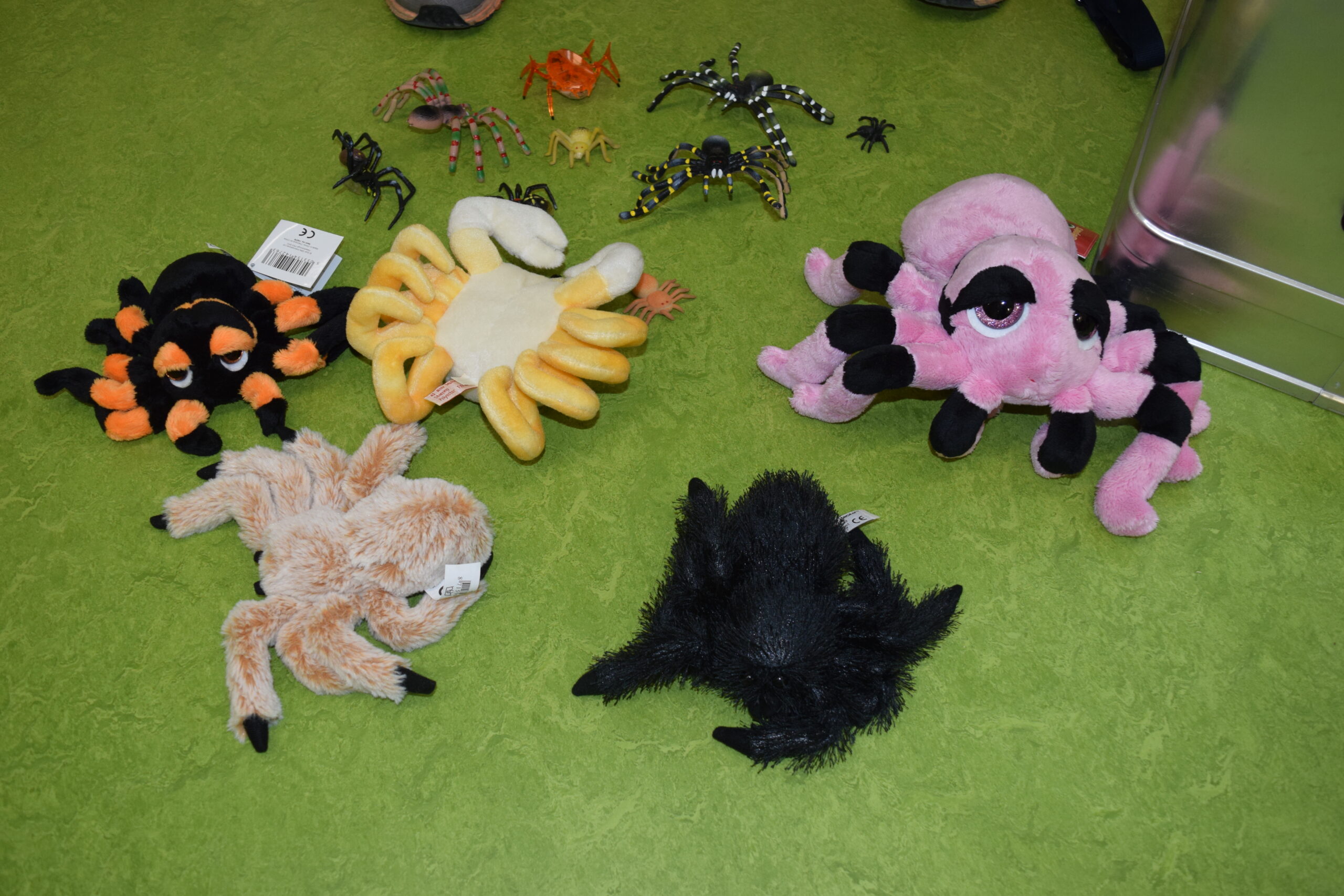
People afflicted with intense arachnophobia can live life in avoidance mode or in the grip of an adrenaline-charged flight response that robs them of joy and energy. Their own fear is the predator, and they are the prey.
Anna’s species of spider, common in Nicaragua and Costa Rica, is known for its docile character and slow movements. That makes her well suited to help them cope, through what Riedinger calls “exposure therapy.”
First-timers meet a 5-inch-long spider—big enough to see her mild venom-containing jaws, her eight legs ending in tiny claws, her front limbs and a domed abdomen that ends in two web filament-producing spinnerets. Among all the fuzz, two tiny eyes are hard to spot.
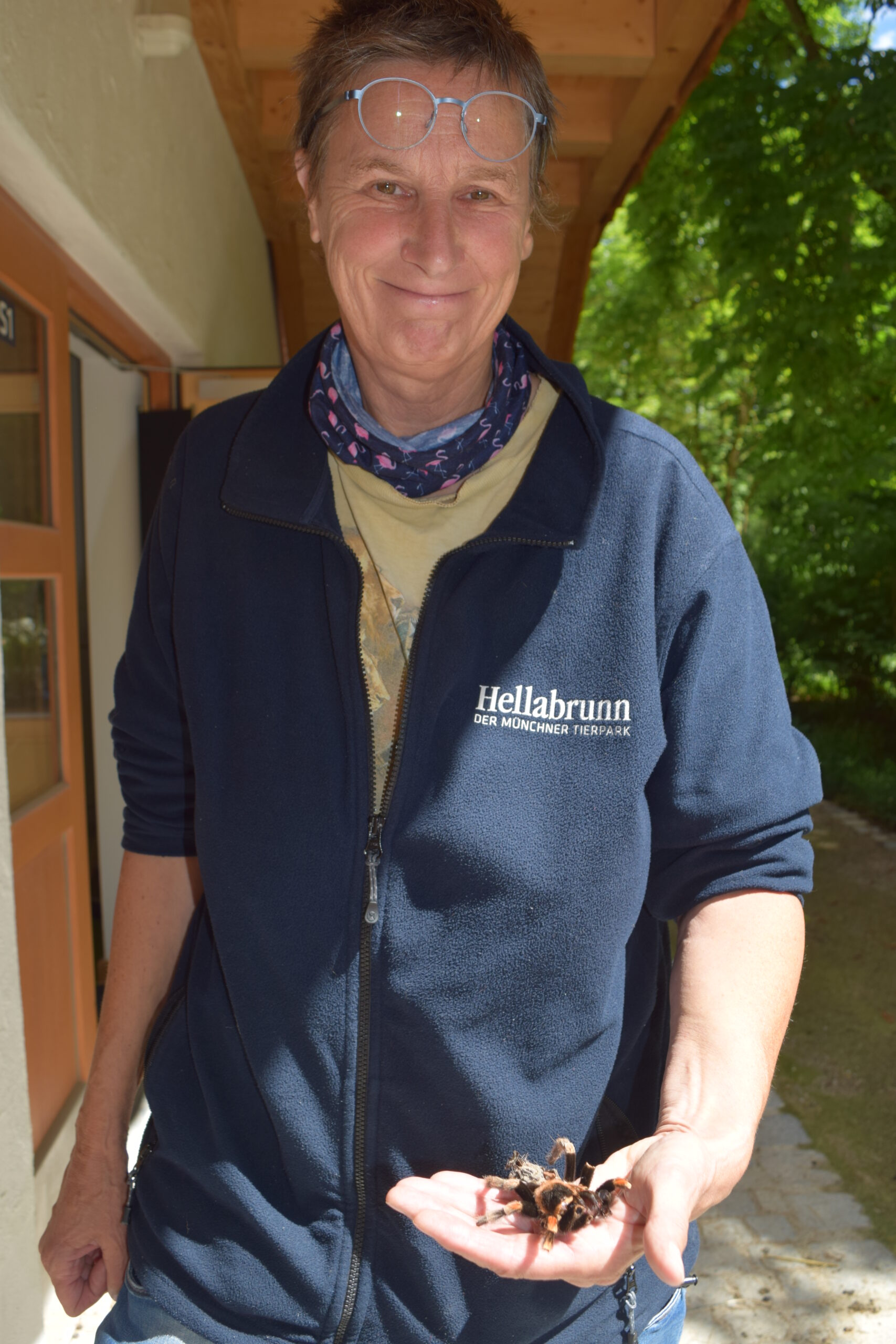
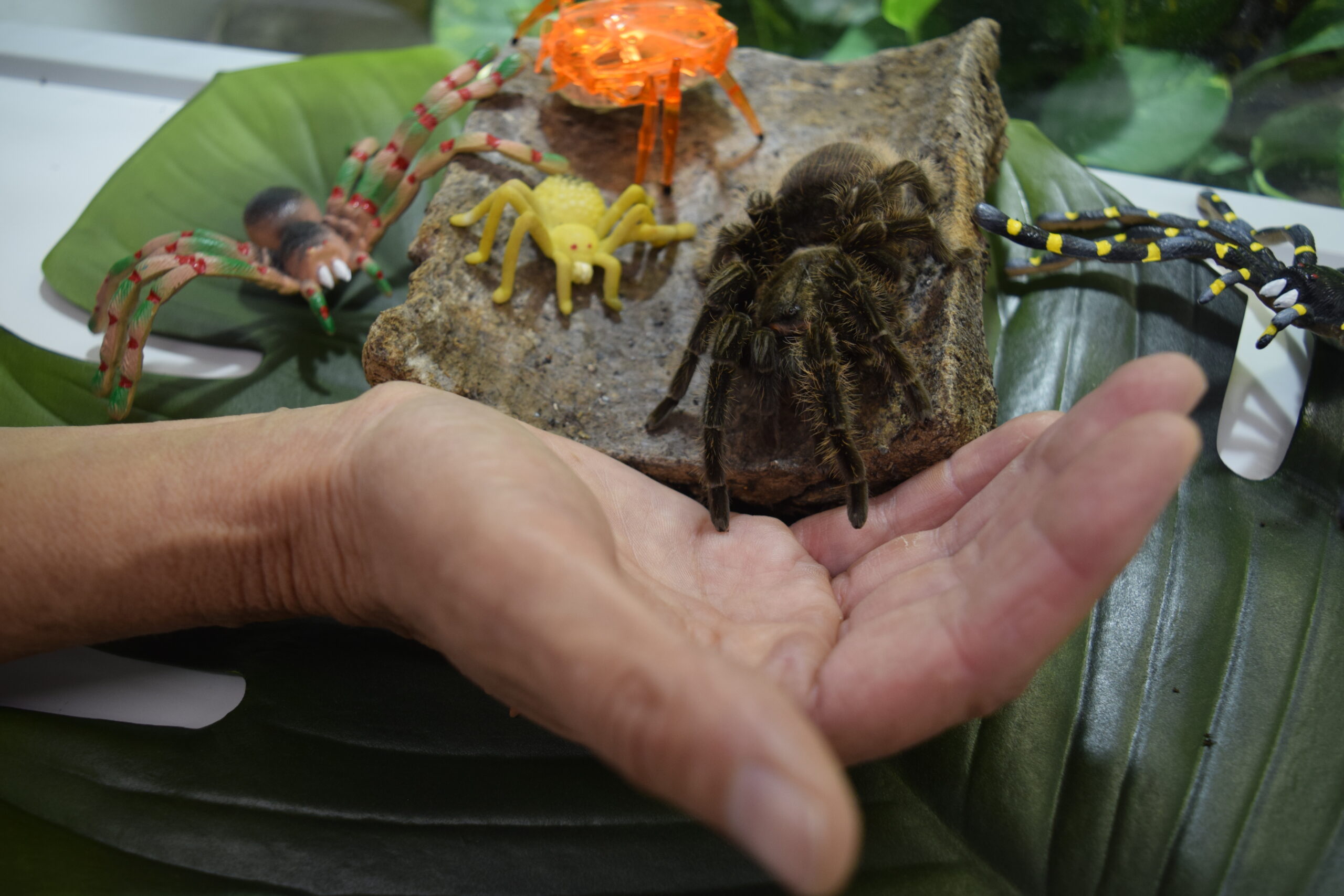
Anna is far larger than any spider commonly found in North America or Europe. So if you can stay calm when Riedinger asks you to hold her, living with the spindly creatures that make lunch of the flies in your garage should be easy.
Anna reliably keeps her composure unless she is stressed by too much handling. Riedinger has never seen Anna bite anyone or rear up, a tarantula’s typical threat posture. Careful to protect both species sharing the room, Riedinger reminds visitors not to take flash photography: Anna might think the abrupt shift in light means a bird is swooping down to attack.
Seeing a spider the size of most cellphones “bristle” with annoyance up close is difficult to forget. She rubs her abdomen with her legs to release a small cloud of stinging hairs, a self-defense tactic that can blind predators.
Hearing about it in real-time from an animal expert can be helpful for arachnophobes who have never considered the world from their bogeyman’s point of view. They also learn to be aware of their own panic responses. They trigger their fear just to observe it. Through guided meditation they conjure up comforting oases of the mind that provide relief when sweating and trembling begin.
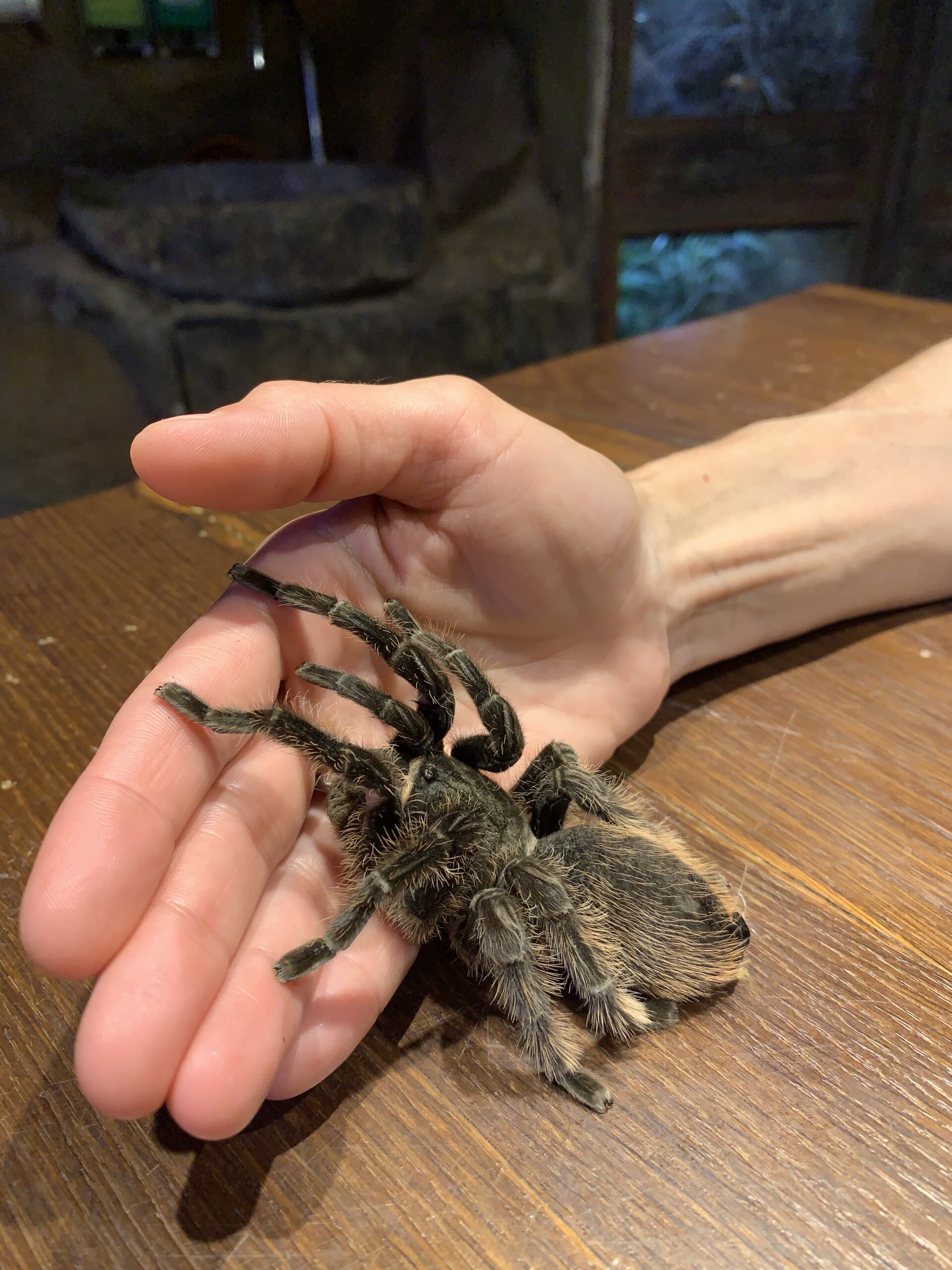
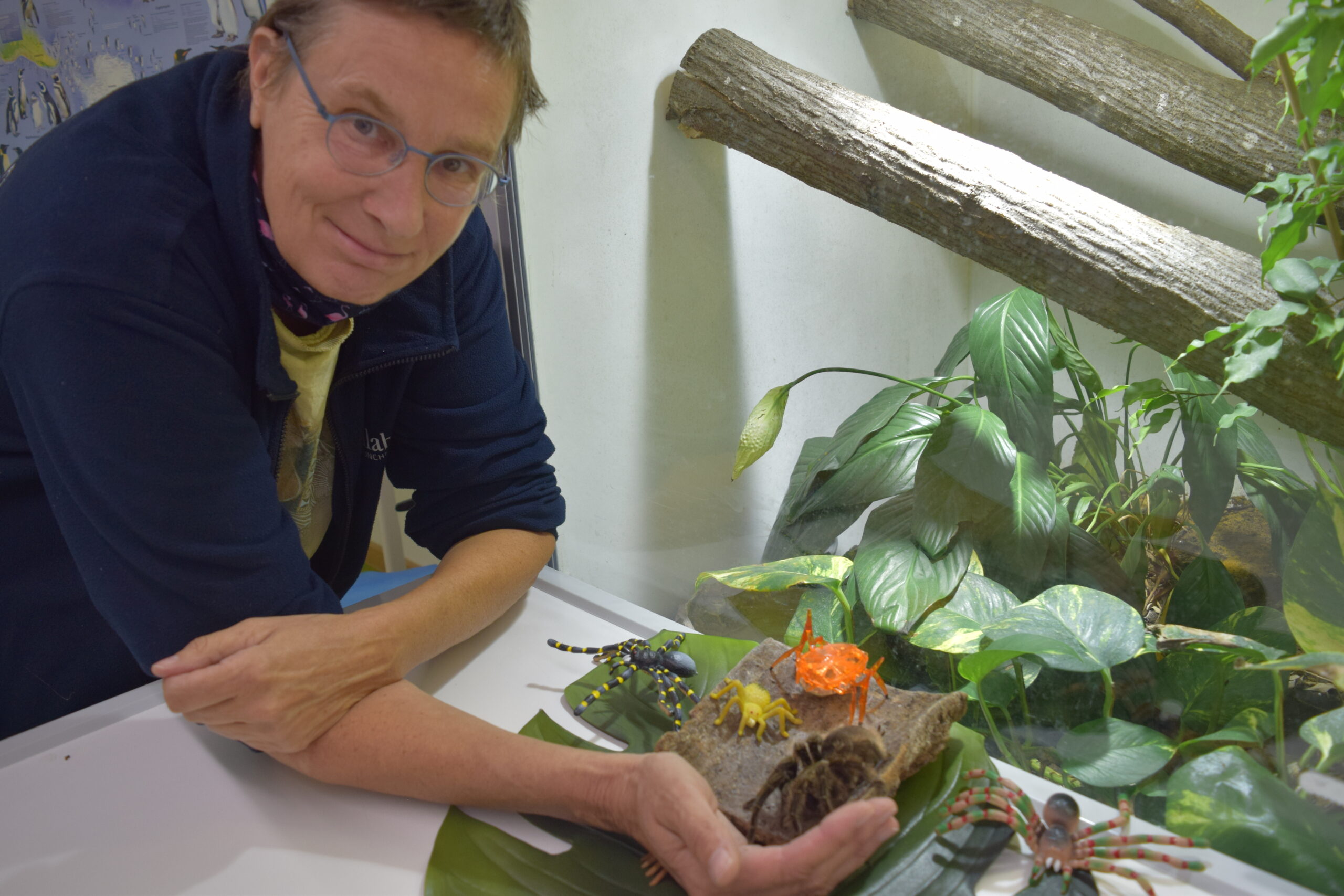
“The seminar works because you very strictly don’t jump over any moment when a scary feeling comes—the opposite of what you experience in normal life,” says Eve Abraham, a Munich seminar participant. “People always tell you, ‘Oh come on, just go by the spider. Forget about it.’ No. Take in every tiny feeling you have and process that feeling. Get yourself back to that warm, comfortable place in your mind, and then go on.”
Abraham dared to touch Anna’s abdomen, but that took hours to develop.
During the eight-hour seminar, arachnophobes examine and describe in detail, and with increasing detachment, spiders both real and imaginary. They learn to breathe, tap, shake and talk tension away before a habitual, brain-numbing adrenaline rush makes rational thinking impossible. They distinguish between dread-ridden fantasy and less threatening reality.
Finally they meet Anna and watch her in her terrarium. Some decide to touch or even hold her.
Among the specific phobias identified by the American Psychiatric Association, arachnophobia is one of the most common. Phobias may have evolved for survival reasons, rooted in genes and personality. Some start when children observe angst-ridden behavior in parents. They may reflect unresolved trauma or emotional pain, channeled into a more “manageable” direction like an eight-legged obsession.
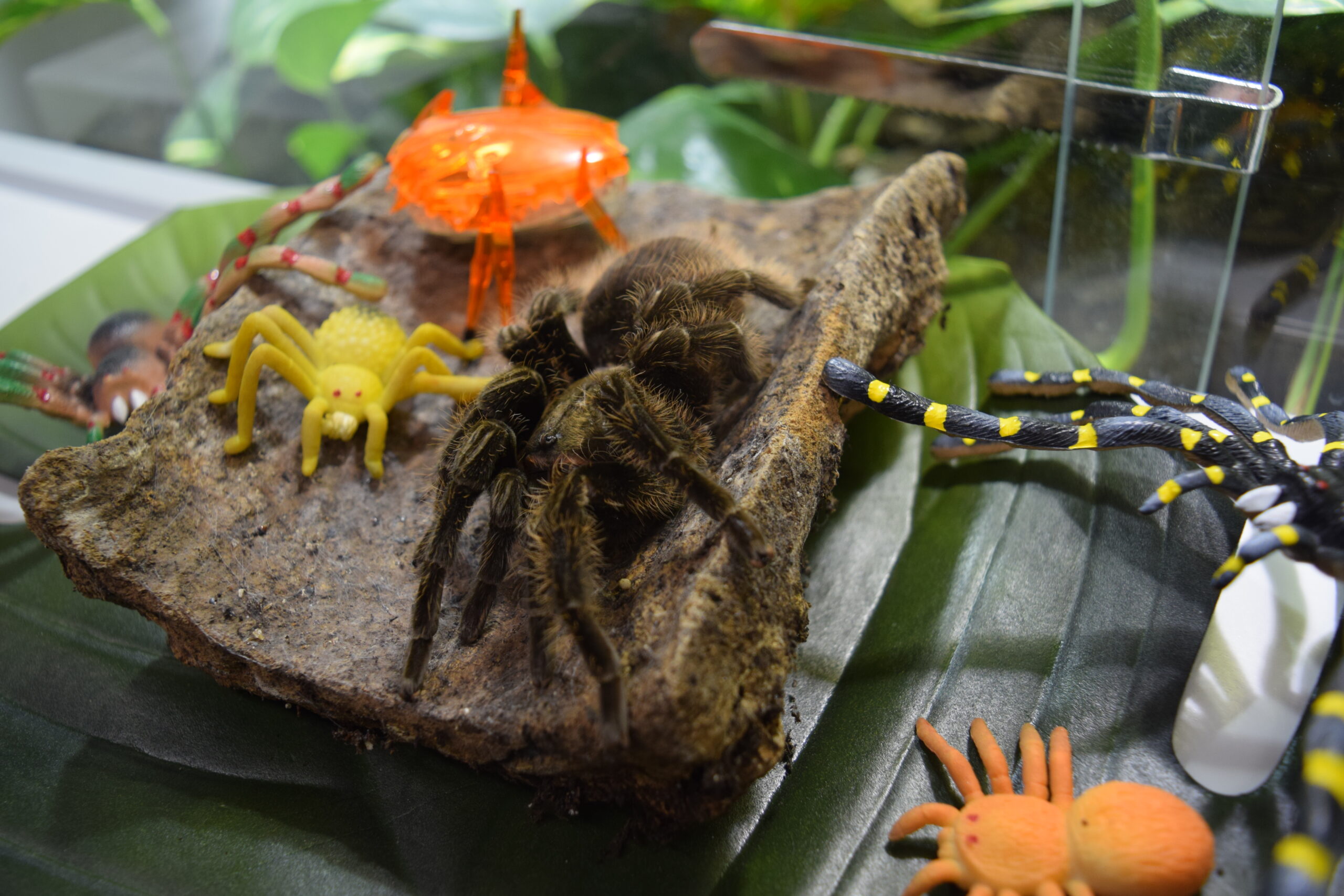

For about $300, visitors to Hellabrunn who are age 16 and older can sort out their anxieties and meet Anna. Riedinger also offers ophidiophobia seminars with a snake named Houdini.
Few zoos offer animal-assisted therapy because of the risk to life and limb—and the cost of insurance. That means most phobia specialists have to work with fake animals and virtual reality equipment.
Lifelong arachnophobe Andrea Neubert lives in an old house where her husband had to seal off an interior access to the cobweb-filled cellar. After a day with Riedinger, she managed to hold Anna—and was amazed how light and soft she felt.
“For me it was important to have therapy with a real animal,” she said. “I don’t think virtual reality would have worked. Your brain knows it’s not real.”
(Edited by Cathy Jones, Fern Siegel and David Martosko.)
The post Untangling Webs of Fear: ‘Therapy Tarantula’ Treats People with Arachnophobia appeared first on Zenger News.
